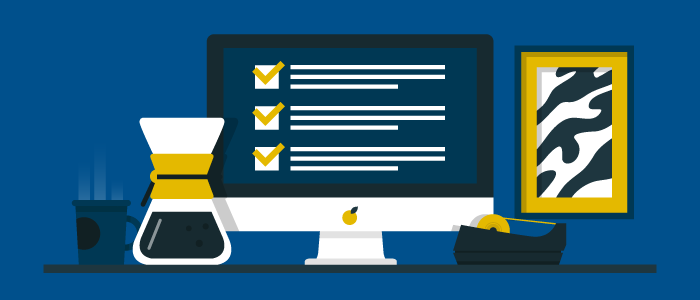
If you’re making plans for your own digital publication, it behooves you to also plan how to make money from it with strategic digital magazine marketing.
After all, buying a list and mailing a big direct mail package, in hopes of getting a bunch of people to subscribe as they did in the old print days, is like trying to sell 21st-century tablets at an old-fashioned general store where hardware, ladies’ hats and pickles all shared the same space, and the proprietor fetched everything on your list, then wrapped up your purchases in brown paper and twine.
In those days, really big publishers could afford to advertise on TV, or in other magazines and newspapers. But most niche publishers relied on direct mail and the occasional bind-in or blow-in card.
When it comes to digital magazine marketing, you have many more options than you did with print. Some of these ideas may seem obvious, but maybe there are a few you might not have thought of before.
[text_ad]
1. Digital Magazine Marketing With Your Website
Naturally, you already have a website where you drive traffic via organic search, convert visitors to email subscribers and sell your numerous products, right? Don’t forget to sell your digital magazine there, too – believe it or not, we’ve stumbled across many publishers who make it nearly impossible to figure out how to subscribe to their digital edition, and focus entirely on their print edition. Why are they hiding it? We’d love to know.
Create a bold “subscribe”or “join” button or tab on your website, so that users can easily take action. And rather than separating print subscriptions from digital subscriptions, place them side by side in the subscription form. Offer a digital archive with your digital magazine? Create a third option to gain all-access and include the web library. Use your digital assets to make the sale!
2. Digital Magazine Marketing with Email Ads
Just like offering digital subscriptions along with print subscriptions on your website, you should always include an offer in your emails. Yankee never misses an opportunity to let you know about their subscription, which includes their digital library, in every daily email newsletter through the use of display and text ads in between articles.
3. Digital Magazine Marketing with Sampling
Metered paywalls are a great way to replace the print methodology of offering free issues. For special-interest publishers who are delivering monthly magazines, we suggest metered paywall that allows visitors to see 3 premium articles per month, which can also be used in the issue archive, making it easier to spend their credits.
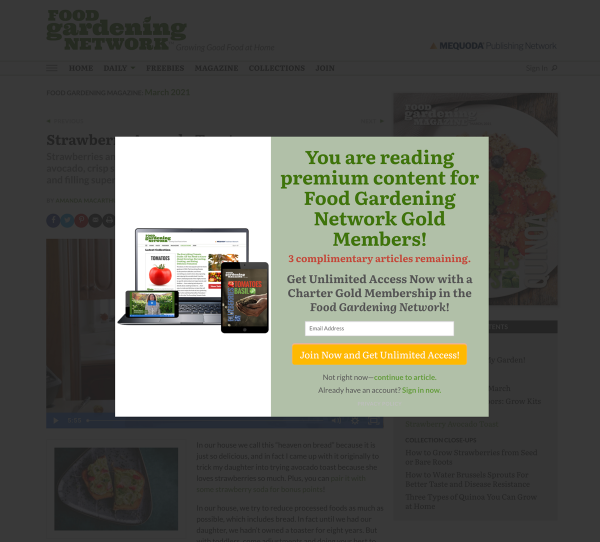
4. Digital Magazine Marketing with Library Previews
Let us introduce a Mequoda favorite email marketing tool: the editorially-driven creative known as a Library Preview. The Library Preview is all about promoting subscriptions through thoughtfully featured excerpts of some of the most captivating paid content available on your site.
Rather than leading with a direct offer, the Library Preview model focuses on the editorial material your site offers its paid subscribers. Library Previews attract consumers with a compelling piece of content before making a brief, but persuasive, sales pitch to entice them to subscribe in order to continue enjoying all of the content your site provides for paid subscribers.
Library Previews almost always follow the same formula, and in our experience, it has proven to be a winning one, especially for those with metered paywalls because it entices non-subscribers to use up their clicks. Once they hit the paywall too many times, they subscribe.
This example below comes from I Like Knitting, where Previews centralize around a knitting theme, or a new issue. I Like Knitting has a metered paywall that allows visitors to view 3 free patterns per month. In their Previews, ILK chooses to point all links directly to the all-access conversion page. Something to also test, is linking to the premium pattern pages mentioned in the Preview, which would use up their free credits while also allowing them to sample the content. This approach may also keep non-members on your email list longer, but you won’t know if you don’t test!
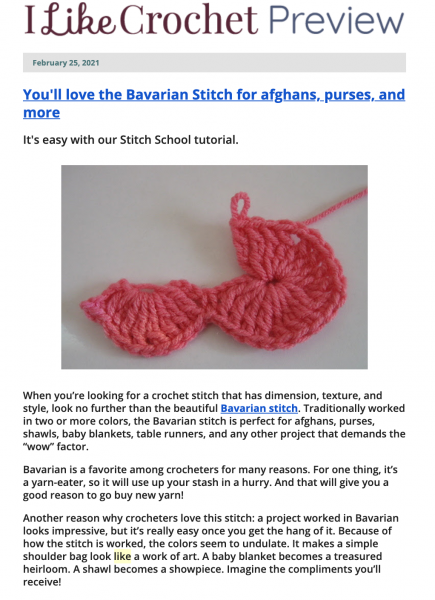
5. Digital Magazine Marketing with an All-Access Pass
There’s no better way to market a digital magazine than with a better product, and the only thing better than a subscription to your magazine is an all-access membership. This would include your print magazine, digital magazine, and access to your digital magazine archive, allowing subscribers to get new issues, and search through old issues. Many publishers with content on additional platforms like video will sweeten the deal by bundling those products into the digital magazine membership as well. By offering an all-access pass, it allows you to price the digital magazine and the all access-membership at higher price points than your print editions, causing a significant increase in your average price per order.
Below is an example of Recipe Lion’s Cooking Club all-access pass page. The list of what’s included in the all-access pass is astounding! Click to see the page.
6. Digital Magazine Marketing with Six Sigma
Six Sigma methods are used in direct marketing to test a control against a number of variables. You test each variable against the control in order to declare a winner and this continues until all the variables have been tested. This can take place over the course of a month, or over the course of a year depending on how many variables you have to test.
In subscription marketing, we adapt this structure to continuously test both offers and creative. For many of our publishing partners, we offer Six Sigma subscription marketing services.
For one of our publishing partners, we launched a high-frequency Six Sigma email program focused on selling more premium memberships. We increased the number of promotional spotlights from the standard 2-3X per week to 5X per week and introduced editorially-driven creative to alternate between offer-driven creative. We saw a 70% increase in their NOPX (new orders per 10K email subscribers) from this program.
The email campaigns are typically planned and measured in one-month cycles, where we identify the best performing spotlights and the worst performing spotlights in a given month-long cycle. We keep the winners and include them in the next month-long email cycle, and we replace the losers with brand new creative.
Meanwhile, we are also testing the offer. For example, for this particular publishing partner, we ran one offer for 4 weeks and we ran a different offer for the next 4 weeks. While this approach is a significant amount of work, requiring active coordination between editorial and marketing, on-the-spot analytics, great copywriting, and interaction with fulfillment to manage the offers, we have seen it work and strongly recommend all publishers try it.
7. Digital Magazine Marketing with Social Media
There’s no excuse not to use one digital medium to promote another. But believe it or not, some of the biggest players have yet to figure this out – and yes, it absolutely makes a difference! Below is an example from Food Gardening. The latest issue is promoted in the example below, with a big image of the cover. For non-subscribers, this will lead to a metered paywall, and as they click through the table of contents, they will quickly be asked to subscribe after three article views. Keeping the table of contents along the right-hand side of the page for consistent navigation as a part of your digital magazine design is a great way to get non-subscribers to get to the subscribe prompts more quickly.
8. Digital Magazine Marketing in Print
If you have the resources, you could be buying space to advertise your digital magazine in other publications. In the past, we’ve seen Bon Appétit advertised in Glamour. And you should definitely be including an offer to go digital or upgrade to all-access when you renew or bill your print subscribers via snail mail.
How do you promote your digital magazine?
This post was originally published in 2013 and has been updated.
[text_ad]
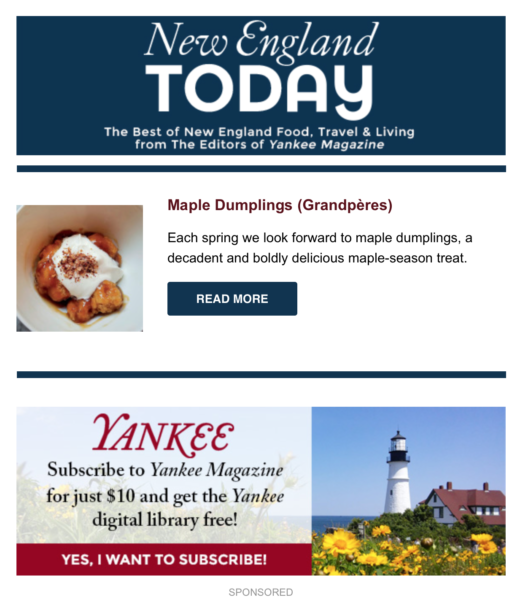
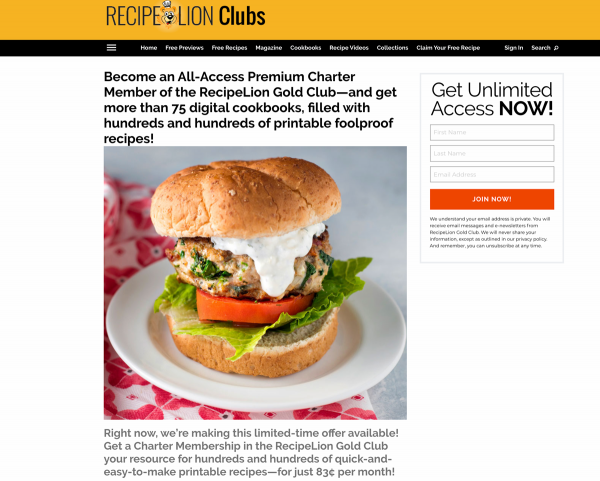
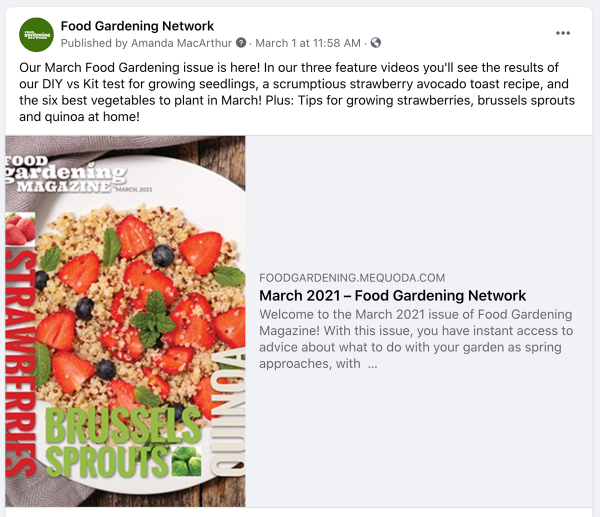



Very interesting and useful article. Thanks!
Being able to view and use Edition on Smartphones is an increasing, vital and fundamental requirement (I have recently seen some fantastic examples of this, happy to share).
In response to an offline comment from a reader, I wanted to add that having some content included for free with the app is important but that can be a wide range of content, not just an actual live sample issue. As in the old direct mail days, a compiled issue may do better than an actual live issue. Also, publishers are experimenting with other types of free content including their free daily email newsletter content. We are still in early days but the good news is we’re not completely starting from scratch. Let’s not forget the lessons we learned in the pre-digital age.
Hi Ingmar — do you want Apple to handle everything? Most publishers don’t. When you sell the subscription on your site, you are able to offer bundles, and the bundled pricing we like to be able to to offer to make decoy pricing work (see our separate posts on decoy pricing if you haven’t already). You have to distribute your app through Apple but for most niche publishers, your marketing is going to generate most of the orders. Going “all in” with Apple it’s going to be hard for most to get the visibility you need to maximize your circulation.
Hey Ed, but how can you sell subscriptions through your own website? In the End, we want Apple to handle all the billing, right? Is there a tool ne can use? And the latest rumors tell us, that Promo Codes should be available for inapp purchases anytime soon, too, right? Any information on this?
HI Anila — in the hopes of clarifying, let me reiterate, you get the data and don’t pay Apple a fee if you sell the subscription through your site. It sounds like you are talking about about having Apple sell the subscription on their site. Then you do lose control of the customer data, and Apple takes a share of the subscription price.
Hello, can you please tell me more about this statement: “as long as your website includes content and isn’t simply a rival retail site, you can have the Apple newsstand actually fulfill these sales, and you don’t have to give Apple a cut of the sale. You also get to keep the data you’ve just gathered, which Apple doesn’t share.”
We have a website that includes content, but we still pay a fee for sales through Apple and we don’t get to keep that data…
Would love more info on this!
Thank you Les. Regarding bundling, I recently wrote a post about decoy pricing for bundling that publishers are using to substantially increase the average order size. The New Yorker is just one of many that is having great success.
(http://www.mequoda.com/articles/digital-magazine-publishing/decoy-pricing-the-biggest-little-secret-in-the-publishing-world/)
Fanatstic artice Ed, much needed and very useful, I am sharing and ditributing this to all our Digital Magazine clients, especially the new ones.
In addition to the 6 great tips I would add:
a) Bundling – selling packages that include both print & digital.
b) Push notifications – Careful on the frequency though.
c) Print to Digital mechanisms, like QR Quodes, Interactive Print
elements like augmented reality experiences instigated from
the print from mobile devices that then deliver or link to the
digital edition versions.
I have a range of examples and case studies if anyone wants access to them (Free) just email les.csonge@yudu.com
Thank you Ron. Can you tell me the market you are serving? It doesn’t sound like this was A-B tested of course, which would provide the most compelling evidence, but of course we often have to make do with imperfect information. I am interested to learn more about your experience if you’re willing to share with us. If you’d like you can contact me off line at Ed at Mequoda.com.
All the points above are good insight however I do disagree with point #5. We have been publishing an iPad app version of our magazine for 20 months and started out by offering a free sample. Sales were flat. When we removed the free sample we saw sales increase. When we decreased the preview from 10 screens to 6 screens sales really took off. From our own research data the less free content consumers are offered the stronger the end sales.